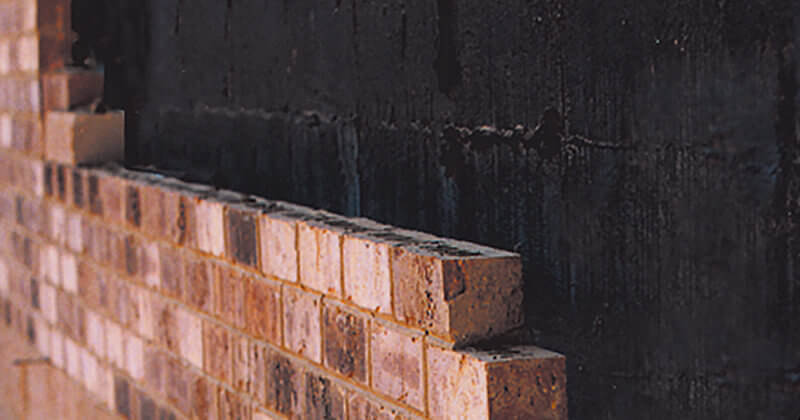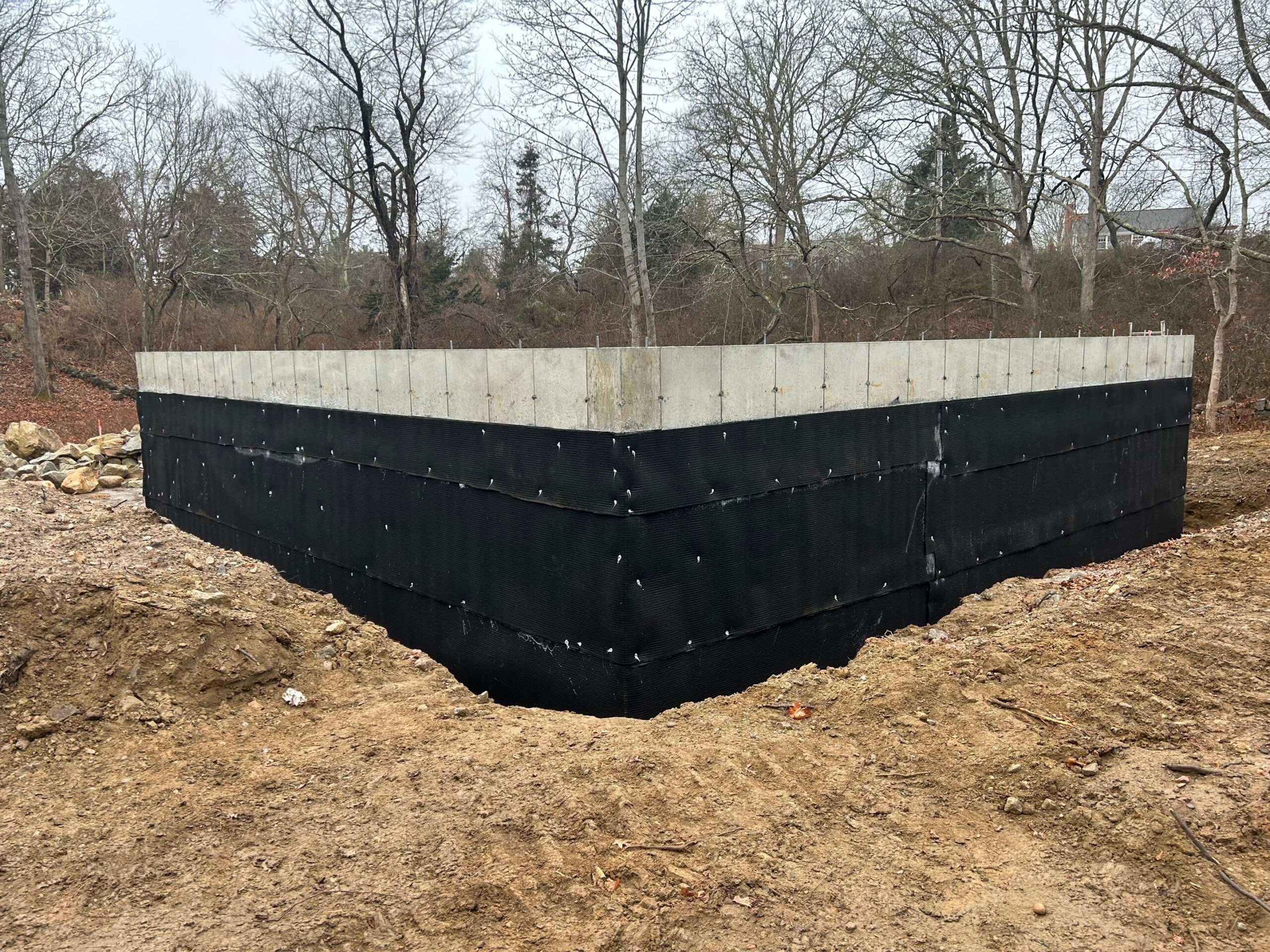Checking Out the Various Techniques and Solutions for Effective Damp Proofing
Wetness in buildings presents considerable obstacles to both structural integrity and indoor air high quality. Different strategies and services have actually arised to combat this pervasive problem. From typical damp-proof membranes to cutting-edge chemical treatments, each technique uses unique benefits. Understanding these choices is essential for efficient moisture control. Nevertheless, picking the ideal option relies on specific structure conditions and needs, triggering more exploration right into one of the most effective moist proofing strategies readily available.
Comprehending the Reasons For Dampness
Wetness can occur from various resources, recognizing these reasons is important for effective remediation. Commonly, wetness stems from three primary resources: climbing moist, permeating damp, and condensation. Climbing damp occurs when groundwater takes a trip upwards via porous materials, such as block or rock, usually due to a lack of a reliable barrier (damp specialist newcastle). Permeating damp is normally created by outside variables, consisting of roofing system leakages, defective gutters, or harmed walls, permitting water to penetrate a building. Condensation, on the other hand, arises from excess moisture airborne, usually intensified by bad air flow and temperature differences, bring about water droplets developing on surface areas. Identifying these underlying concerns is vital, as each kind of dampness requires a tailored strategy for removal. Proper evaluation helps in identifying one of the most effective services, ultimately securing the architectural stability of a structure and improving indoor air high quality
Typical Damp-Proof Membranes

Chemical Damp-Proofing Solutions
Chemical damp-proofing remedies supply an innovative approach to avoid wetness invasion in buildings. These methods normally involve the application of liquid chemicals that permeate masonry and create a barrier against rising wet. Typically used chemicals include silanes, siloxanes, and various other water-repellent representatives that respond with surface area materials to create a hydrophobic layer.The application process usually calls for exploration holes into the walls, infusing the chemical remedy, and enabling it to heal. This technique is particularly helpful for older frameworks where conventional damp-proof membranes may be not practical. Chemical damp-proofing can be much less disruptive and much more economical than extensive remodelling projects.While reliable, these services depend on appropriate application and ecological problems for peak performance. damp proofing newcastle. Routine upkeep and monitoring are important to ensure the long life of the damp-proofing treatment. Overall, chemical damp-proofing represents a flexible option for protecting structures against moisture-related damage
Tooth Cavity Wall Construction Techniques
Tooth cavity wall surface building methods offer countless advantages, specifically in moisture control and energy performance. By incorporating an air void between 2 layers of stonework, these walls successfully mitigate water ingress while improving insulation. This mix not only shields frameworks from dampness however likewise adds to reduced energy usage.
Advantages of Dental Caries Wall Surfaces
When thinking about efficient wet proofing methods, the advantages of tooth cavity wall surfaces attract attention prominently. Cavity walls contain 2 different layers, developing an air gap that efficiently minimizes wetness infiltration. This style minimizes the danger of moisture, as the outer wall works as an obstacle against rain and water ingress. Additionally, cavity walls improve thermal insulation, which adds to power efficiency by decreasing heat loss. They also provide sound insulation, helping to produce a quieter indoor setting. Additionally, the air gap permits ventilation, which helps in moisture control and lowers the likelihood of mold and mildew development. These benefits not only boost the general convenience of a structure yet additionally add to its long life and structural stability.
Wetness Control Strategies
Effective moisture control methods are vital in tooth cavity wall surface building to guarantee long-lasting protection versus moisture. One key method includes the incorporation of weep holes, which facilitate water drainage from the dental caries, avoiding buildup. Additionally, the use of breathable membrane layers can assist handle dampness levels while permitting trapped vapor to leave. Correct placement of insulation is likewise critical, as it ought to not block water drainage paths. Guaranteeing that the external fallen leaves of the cavity wall are created with waterproof materials enhances general longevity. Regular maintenance checks are vital to recognize any kind of clogs or damage early, guarding the structure's stability. Eventually, a mix of these strategies creates a durable protection versus dampness breach in dental caries walls.
Insulation and Power Efficiency
Insulation plays a vital role in enhancing power performance within dental caries wall surface building. By including protecting products, these walls produce a thermal barrier that reduces heat loss and reduces power intake. Efficient insulation not just aids maintain a stable interior temperature but also alleviates the danger of dampness, as it prevents condensation within the wall surface cavity. Different methods, such as the usage of inflexible foam boards or mineral wool, can be employed to attain perfect insulation performance. Additionally, proper installment is essential to guarantee that voids and gaps are minimized, which can or else jeopardize energy performance. Eventually, a well-insulated cavity wall surface contributes greatly to general sustainability and lowers cooling and heating prices for home owners.
Outside Damp Proofing Methods
External wet proofing techniques are essential for shielding structures from dampness infiltration. 2 effective methods consist of the application of water resistant membrane layers and the installation of French drains pipes. These services aid alleviate water accumulation and maintain the integrity of structures.
Waterproof Membrane Application
While numerous techniques exist for preventing moisture ingress, the application of water resistant membrane layers stays a very efficient outside damp proofing strategy. These membrane layers are commonly made from products such as polyethylene, rubber, or customized asphalt, supplying a durable obstacle versus water infiltration. The installation process entails using the membrane to the exterior surfaces of wall surfaces or foundations, making sure full coverage to stop leaks. Proper adhesion and sealing at joints are essential to making best use of effectiveness. Waterproof membranes can be applied in different kinds, consisting of fluid coverings and sheet membrane layers, permitting flexibility based on the certain demands of the structure. This technique not just shields structures from moisture however more info likewise boosts their long life and architectural stability.
French Drainpipe Installation
One reliable method for managing groundwater and avoiding wetness build-up around a building's foundation is the setup of a French drain. This drainage system contains a trench full of crushed rock and a perforated pipeline that redirects surface area water away from the foundation. Correct installation requires careful planning, guaranteeing that the drainpipe slopes away from the structure to assist in excellent water circulation. In addition, the location of the drainpipe is important; it needs to be positioned in areas vulnerable to merging or excess wetness. Normal upkeep, including clearing up particles from the gravel and guaranteeing the pipeline remains unhampered, is vital for long-lasting effectiveness. Eventually, a well-installed French drainpipe can considerably lower the danger of water-related issues in structures and basements.
Interior Waterproofing Methods
Inside waterproofing strategies are essential for safeguarding a structure's inside from moisture seepage and prospective water damages. These approaches normally entail the application of specific materials and methods designed to produce a moisture obstacle within the framework. One typical strategy is the use of water-proof finishings or sealers on walls and floors, which protect against moisture from penetrating surfaces.Additionally, installing indoor water drainage systems, such as sump pumps, can efficiently handle water buildup in basements and crawl areas. An additional method entails making use of vapor barriers, which are set up to hinder dampness movement from the ground into living spaces.Moreover, resolving any cracks or spaces in wall surfaces or foundations with suitable sealers assures a comprehensive defense against water invasion. By carrying out these indoor waterproofing methods, homeowner can substantially lower the danger of mold and mildew growth, architectural damages, and other moisture-related issues. Proper execution of these methods is essential for long-lasting security and structure stability.
Regular Upkeep and Examination Practices
Regular maintenance and evaluation methods are crucial for assuring the lasting performance of damp proofing solutions in any building. Routine checks allow property owners to identify very early indicators of dampness breach, such as peeling off paint, mold and mildew development, and mildewy odors. These indicators can signal underlying concerns that need prompt attention.Inspections should be carried out a minimum of annually, concentrating on at risk areas like basements, crawl rooms, and outside wall surfaces. Throughout these assessments, homeowner must check out sealers, water drainage systems, and air flow to validate they operate correctly.Additionally, keeping downspouts and seamless gutters is crucial, as stopped up systems can lead to water accumulation near the foundation. Implementing a normal maintenance schedule, along with timely repair services, can substantially extend the lifespan of wet proofing measures and shield the structural honesty of the building. Aggressive measures eventually contribute to the general wellness and safety of the living atmosphere.
Regularly Asked Questions
How Much Time Does Damp Proofing Usually Last?
The duration of wet proofing efficiency differs, normally lasting between 20 to half a century. Factors such as application high quality, ecological conditions, and maintenance techniques considerably influence the durability of the wet proofing treatment.

Can I Damp Proof My Home Myself?
The individual pondered the expediency of DIY damp proofing. With appropriate research and the appropriate materials, it is feasible. They additionally acknowledged the relevance of expert advice to guarantee resilient performance and prevent future problems.
What Are the Indicators of Inefficient Damp Proofing?
Indicators of ineffective moist proofing consist of persistent musty smells, visible mold and mildew growth, peeling off paint, moist patches on walls, and timber decay - damp specialist newcastle. House owners should attend to these issues without delay to stop further damages and health worries
Does Damp Proofing Affect Indoor Air Top Quality?

Just How Much Does Specialist Damp Proofing Expense?
Specialist damp proofing prices vary considerably, typically ranging from $1,000 to $5,000 depending upon the property's size, the extent of the moist problem, and picked methods. Each situation calls for a tailored analysis for precise prices. Commonly, moisture originates from 3 main sources: climbing wet, passing through moist, and condensation. When thinking about reliable moist proofing methods, the advantages of cavity wall surfaces stand out prominently. Outside wet proofing methods are essential for safeguarding structures from wetness seepage. While different approaches exist for preventing dampness ingress, the application of water-proof membranes stays a very reliable exterior wet proofing strategy. Indicators of inadequate wet proofing consist of relentless stuffy smells, visible mold growth, peeling paint, damp patches on wall surfaces, and timber degeneration.